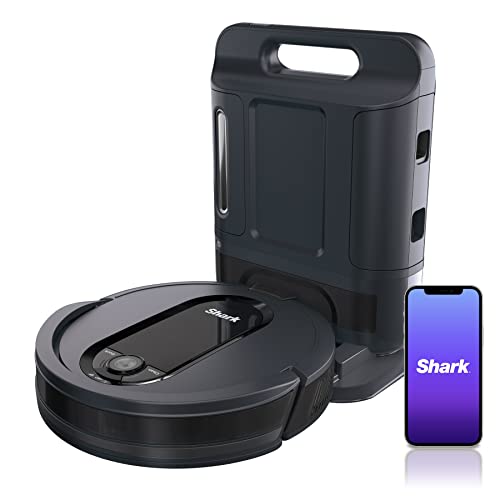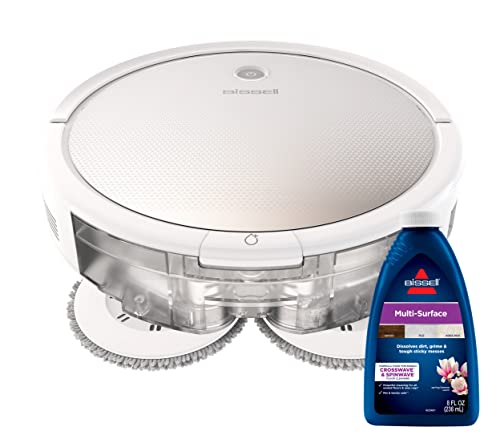10 Tell-Tale Warning Signs You Need To Buy A Robot Vacuum And Mops

Robot Vacuum and Mop - Hands-Free Cleaning Made Easy
If you're interested in a hands-free cleaner that can do it all, consider this robot that is two-in-one. It can clean medium and low-pile floor carpets and the app allows you to create no-mop areas and adjust cleaning schedules and modes of operation.
Look for models with sensors that can recognize the kind of floor they are placed on as well as empty dirt and water from their own tanks, and stay clear of obstacles like phone chargers, pet hair, and socks. Find out how easy it can be installed.
Self-Emptying
People are always looking for ways of reducing their workload as the world gets more hectic and chaotic. Robot vacuums and mop are some of the best tools that are available to assist you. They can clean pet hair, dirt and crumbs, while simultaneously cleaning the floors. You can use your smartphone or voice assistants to control these machines with routines that are pre-programmed and have specific room designations.
One of the biggest time-savers for both the users and machines is self-emptying models that don't require you to empty the dustbin after each cleaning session. This will help you save time and allow your robot to clean your home more frequently.
If you're thinking of a model that self-empties it, make sure to verify the size of the bin as it is likely to fill up if it is regularly used. Also, you'll want to ensure that the system doesn't overfill, causing a clog that will prevent the robot from being able to empty it completely.
The self-emptying feature is a way of taking the dustbin out of the machine and putting it in a larger storage container. Think of it as a bag on a vacuum cleaner. It is empty every two or three cycles. These robots are worth the extra cost because they feature this top feature.
To perform the mopping function certain models automatically wash and dry their own soiled pads after each use. Others have a dock that does the work for you, and you only have to empty it once or twice a year.
For a single-function robot that does both jobs look into this top-rated model from Roborock. The RockDock-S7 MaxV Ultra can vacuum and mop, with the dock that can do all the maintenance for you. You don't have to empty the tanks manually, and you can schedule the unit or even start it with on-device controls and voice assistants such as Alexa and Google Assistant. It even has boundaries that keep it out of certain areas if you don't want it roaming all over your home.
Object Avoidance
The most effective robot vacuums come with objects avoidance. This helps the appliance navigate around furniture leg and stray toys. This feature is essential for households with pets and children, since the robot could jam or break in the event of hitting them.
The technology is typically based around a single sensor or a pair of sensors located near the vacuum cleaner's shock-absorbing bumpers. Once these sensors detect an obstacle the robot will then turn and reorient itself until it is able to find a path that is clear. Certain models utilize lidar technology, which makes use of lasers to determine the distance between the robots and surrounding objects. This allows it to create an outline of its surroundings in real-time, and move more efficiently around your home.
Other robovacs that do not employ lidar technology are designed to make use of monocular or binocular vision to detect obstacles with cameras. These systems are most effective in bright light but they don't perform as well in low-light conditions or with objects that are the same hue as the surroundings. For instance, a robot with monocular vision may have difficulty seeing shoes or cables.
Certain robot vacuums are more sophisticated than others, and can do much more than avoid obstacles. This is why they are called smart vacuums. They can create a virtual map for your home and send them to specific areas or rooms via an app. They will even keep track of the areas they've previously cleaned. This can reduce the time needed to clean and ensure that your home is properly cleaned.
The most advanced robotic vacuums and mops are able to switch between different kinds of flooring. Some robot vacuums and mops will automatically recognize the flooring type in a specific room and adjust the suction and brush functions accordingly. Others can even move from carpet to hard floors without losing their suction power.
All smart vacuums and mops must have some kind of obstacle avoidance, irrespective of the type of flooring. These features stop the vacuums from becoming caught in webs or wires that can cause them to lose their suction. Some models have a checklist of objects they know about for example, socks, shoes, and pet waste. The best models can recognize these objects and calculate their size, distance and avoid them without getting into it.
Floor Mapping
Most robot vacuums come with sensors that allow them to detect objects. If a object -- like furniture legs or a random toy is thrown in the way, it triggers a sensor which tells the vacuum steer away from the obstacle and towards a cleaner area of the floor. These sensors aren't foolproof. The Roomba 900 Series, for instance, was able to avoid our shoeslaces and headphones however, it did accidentally take up the cable. This is why we advise removing any objects from the robot's path prior to guiding it through your home's rooms.
Many of the mopping and vacuum robots we have tested in The Spruce include an app. It can be used to save maps, create schedules, select cleaning modes and track the performance of your robot. The top apps provide features that help your robot be more efficient. They are user-friendly and simple to use.
App integration lets you keep the track of the water tank and dirty pads on your robot. It is recommended to look for models that allow you to check the level of the water tank as well as the amount of wetness on the pad, and when the pad's cloth should be changed. You can set up a routine that automatically changes the pad after it is wet to stop mildewy odors from growing.

The mapping feature is crucial for robot vacuums that work on different floors. It allows the robots to create an outline of your home that they can use to navigate and clean various areas. Some robots employ a combination of sensors and artificial intelligence to create these maps. For instance, iRobot's Vacuuming Mapping utilizes multiple sensors to scan an area that includes walls and corners to determine the distance the robot can travel before it hits furniture or bumps into obstacles.
Other robots, such as the Ecovacs DeebotX1-OMNI or the Roborock S7 MaxV Ultra, use optical sensors to detect where the walls are. They then employ a mapping algorithm or follow
the best robot mop edges of furniture to figure out the most efficient way for each room.
Mopping Sets
Robot vacuums are self-cleaning, and you only need to push a button within the app or on the remote control to allow them to clean up a space. You can also set schedules using voice commands. This is a great feature for busy families who want their robot vacuums to perform their job at the exact time every day.
Many robot mops come with microfibre pads that are soaked by water tanks located at the base. They are able to be used multiple times before they require to be replaced or washed. Models that can adjust water flow to suit different floors are ideal. It is also important to take into consideration the size of your tank, its ability to switch between wet mopping and dry mopping, and the amount of time a robotic mop can last on a single charge.
The best robot mops are able to efficiently and quickly clean hard floors, getting under tables and around obstacles that you'd have trouble doing manually. They're not perfect, however they can be difficult to climb and descend the stairs or over ledges which divide rooms. They can also leave streaks of wood and tiles particularly in bright sunlight.
A high-quality robot vacuum and mop must include a sensor that can detect and avoid carpet. This feature is important in homes with different types of flooring, as the robot cleaner will not be sucked into or run over rugs. It must also be able to detect other objects that could hinder the cleaning process, such as cords or tassels. It will also allow you to designate zones of no-go that block the robot from entering these areas.
The majority of robots that we test in our CHOICE lab come with smart app integration. This lets you save maps of your house, set up cleaning schedules, and select cleaning options. You can also set up virtual barriers to ensure that your robot is kept from certain areas, and get (sometimes amusing) warnings of errors if the device has issues. Certain applications are more user-friendly than others, and a few offer a webcam for live monitoring of your robot.
 Robot Vacuum and Mop - Hands-Free Cleaning Made Easy
Robot Vacuum and Mop - Hands-Free Cleaning Made Easy The mapping feature is crucial for robot vacuums that work on different floors. It allows the robots to create an outline of your home that they can use to navigate and clean various areas. Some robots employ a combination of sensors and artificial intelligence to create these maps. For instance, iRobot's Vacuuming Mapping utilizes multiple sensors to scan an area that includes walls and corners to determine the distance the robot can travel before it hits furniture or bumps into obstacles.
The mapping feature is crucial for robot vacuums that work on different floors. It allows the robots to create an outline of your home that they can use to navigate and clean various areas. Some robots employ a combination of sensors and artificial intelligence to create these maps. For instance, iRobot's Vacuuming Mapping utilizes multiple sensors to scan an area that includes walls and corners to determine the distance the robot can travel before it hits furniture or bumps into obstacles.
